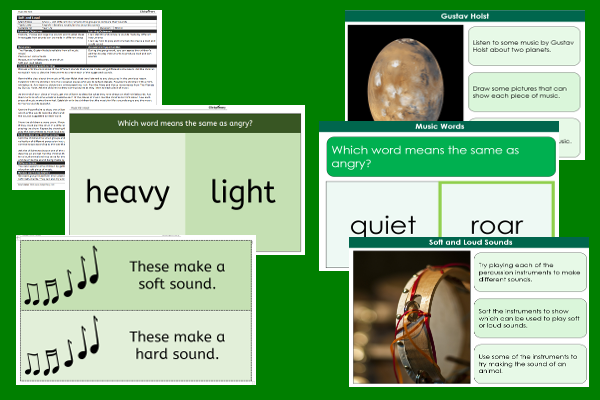Home > Key Stage One > Music > Gustav Holst
Lesson Three – Soft and Loud Sounds

This music teaching pack for Key Stage One gets the children to select and sort a range of different percussion instruments into matching groups to compare their sounds.
The class can identify and define special vocabulary words that can match the words of soft and loud used to describe pieces of music composed by Holst to represent planets in space.
Download this teaching pack including a lesson plan, classroom activities and an interactive presentation to teach the children to select and sort a range of different percussion instruments into matching groups to compare their sounds
Activities in this teaching pack include a set of display posters to identify vocabulary that can be used to describe different emotions in pieces of music and a set of activity cards to group percussion instruments by their matching sounds when played to represent planets in space.
The interactive presentation gets the children to explore the meaning of some of the vocabulary words that can be used to describe sounds created when playing different percussion instruments.
This lesson is part of a music scheme of work to get the children to investigate the style and structure of different compositions by a famous musician and create sounds to represent a particular place or landscape. There are teaching activities for shared learning, activity worksheets to support independent learning and interactive presentations to introduce concepts and key skills.
-

Maths Measurement Assessment
Assess abilities in estimating, measuring and comparing a range of different measurements for length, mass and capacity
-

Family Life
Investigate and reflect on some of the special events and experiences that might happen in the life of a family
-

Final Sounds Word Guess
Practise playing some guessing and matching games to identify the spelling and meaning of words with different final sounds
-

Building Reports
Explore how to collect facts and information to work with when composing and presenting non-chronological reports about buildings that can be found in the local area
